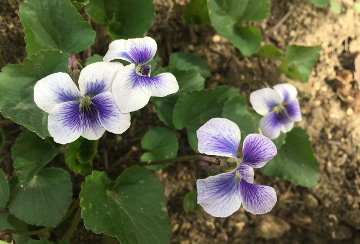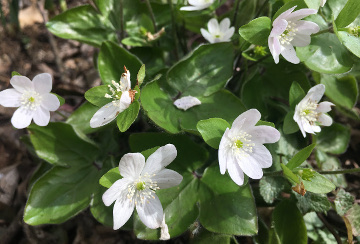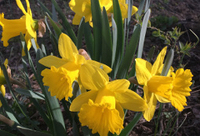
Cottage Style Borders

A true cottage garden blends several generations of its original plants, and you can see the thriving offspring sprinkled through the landscape, pulling together what was supposed to be a haphazard collection of plants into a cohesive landscape design.
What is surprising is the plants themselves, and not the gardener, do most of the work. Cottage garden staples are enthusiastic self-seeders. They throw out runners, split their rhizomes and grow clumps so large they need to be divided, just to keep their vitality.
You start with one large garden phlox, and pretty soon you have a garden full of them, beautiful variations on the original theme, more every year.
Sweet violets, daylilies, hostas, Formosa lilies, lily of the valley, hellebores, irises, hollyhocks, four o'clocks, cleomes, love in a mist and larkspur are happy to provide you with fresh offspring every year, and once they found their sweet spot in your garden, you'll have them forever.
Don't try to bend the cottage garden to your will, it thrives on happy chaos. Plants wander, trail, grow out of proportion, surprise you with unexpected colors, even move from their spots in mysterious ways.
That's nature's gift to the gardener, and one to be graciously accepted.

Woodland Natives

Many woodland natives found their way into the flower garden, because they adapted to grow in the shade and acidic soils.
Ferns, Dame's rocket, bleeding hearts, trilliums, bluebells, foxgloves and primroses all hailed from the woods before they were hybridized to grow larger and more floriferous in our shade borders.
My favorite, Solomon's Seal, is truly a plant for all seasons: in spring it produces long strands of white flowers, lined up on the underside of the stems, in summer the emerald green foliage maintains its vibrancy, only to turn bright yellow in the fall and leave the stage to dark blue berries in winter.
Columbines, Jacob's ladder and tall bellflowers thrive in light dappled shade, and the sturdy hellebores grow and bloom even in full shade.
Remember, forest soils, while acidic, contain a lot of humus, and therefore are nutrient dense. Woodland borders need consistently moist, rich soils and protection from scorching heat to look their best.
